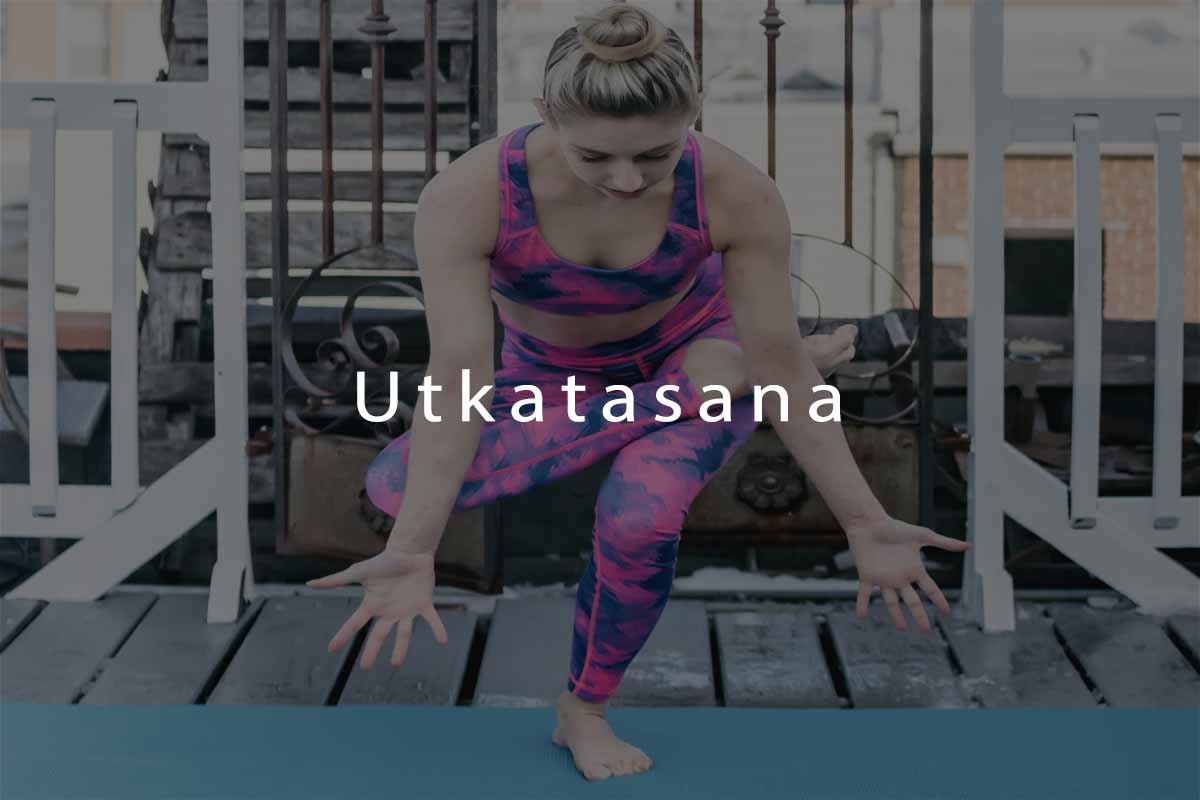Utkatasana helps in conditioning of thighs and calf muscles. The asana is also known by the name of Chair Pose, as while performing this asana, the practitioner seems to be seated on a chair.
Etymology of Utkatasana
The Term Utakasana comprises Two Sanskrit words: ‘Utkata’ meaning furious and ‘Asana’ meaning pose. The asana is known by this name, as the body posture of the practitioner resembles that of an animal who is furious and has attained an attacking stance.
Steps for performing Utkatasana
1. Stand in Tadasana posture (insert hyperlink), with heels separated from each other. the big toes of the feet must maintain a little distance (almost joined0.
2. The lower abdomen must be contracted inward (so that it can provide support to the backbone). Keep both shoulders at a normal position and your chest opened.
3. Breath in. Raise your both hands over the head. the palms can be joined or can be kept separate at distance equal to the distance between shoulders. Ensure that the lower rib cage must be in line with the pelvis region.
4. Exhale and bend your knees, so that the thighs become parallel to the floor. The knees must be in line or ahead of the level of the feet.
5. Move your upper body a little towards the knees, so that the upper region of thighs and the torso are vertically aligned. The inner region of both thighs must remain parallel to each other. Lower your upper thigh bones towards the heels.
6. Extend your lower backbone by pointing and lowering your tailbone towards the floor.
7. Stay in this asana for up to half or one minute. To return to the previous position, inhale and straighten your knees. bring your arms in normal position and exhale.
8. This posture can be repeated up to five times in a yoga session.
Precaution for beginners/practitioners
1. People suffering from arthritis, low Blood pressure Knee pain, ligament injury or sprained ankle must avoid practicing this posture.
2. The posture must not be practiced in cases of shoulder injury, pain in lower back and during menstrual cycles.
3. During the practice, practitioners can also keep their hands stretched straight ahead with palms positioned parallel.
Benefits of performing Utakatasana
1. Helps in Reducing accumulation of fat in the hip regions
2. Tones muscles of thigh, knees and ankles
3. further strengthens lower back region and torso.
4. helps in reducing weight
5. stretches muscles of chest, spine and hips.
